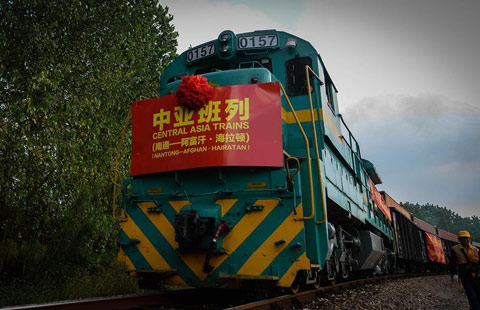Chinese experts help Kyrgyz farmers revive dreams of 'white gold'
(Xinhua) Updated: 2016-08-26 14:32OSH, Kyrgyzstan - "Chinese seeds, fertilizers and pesticides are revitalizing our cotton fields," said 60-year-old Nurdinov Nizomidin, as he wedged his feet through his lush cropland in southern Kyrgyzstan, smiling.
However, some 10 years ago, cotton, instead of being a reason for smile, was a symbol of sorrow for Nizomidin, because two of his three sons decided to ditch non-longer profitable cotton field for better jobs in the city.
In the 1980s and 1990s, with the field guidance of former Soviet Union scientists, Central Asia accounted for nearly 20 percent of the world's total production of cotton, or the "white gold." The Kara-Suu district, Nizomidin's hometown, with 3,000 years' history of cotton cultivation, was a star production area then. Life was well-off.
But when the scientists left, technologies have stagnated. Central Asia's output plunged to only 7 percent. Cotton quality also dropped. In Kara-Suu, textile factories were closed down one after another. Farmers shifted to grain. Youngsters gave up farming.
Nizomidin has not yet reconciled himself to all these changes. Cotton means life to him.
"It was the Chinese agro-technicians that came to the rescue of my dream," he said.
In 2003, a team of "going global" Chinese experts, with the Institute of Cotton Research of the Chinese Academy of Agricultural Sciences (CAAS), came to Kara-Suu to work with the locals. They offered Chinese seeds for free, and tried to find the best suited fertilizers and pest killers.
Years of efforts paid off. The best output in Kara-Suu was over 5 tons per hectare in 2014 and 2015, while the crest under former Soviet Union experts was 3.3 tons.
Moreover, the quality is far better now, said a senior staff of a local cotton processing plant. The Chinese way largely reduced the proportion of wasted materials, he said.
"We trust these Chinese scientists and wish they can continue popularizing their methods in our country," said Nizomidin.
Life is now on a faster track. Nizomidin said he earns some $40,000 a year now, while the country's average annual income is $2,400.
Yet the Chinese experts who have helped Nizomidin and his fellow cotton farmers are dreaming bigger. They see that the climate of Kyrgyzstan and Central Asia at large is similar to that of China's Xinjiang Uygur autonomous region, if not better. Therefore, Xinjiang's experience in cotton growing can be copied and modified, to help rejuvenate the cotton industry in Central Asia.
Kyrgyzstan can be an important partner of China in Central Asia in terms of cotton production cooperation, said Li Jiayang, China's vice minister of agriculture and president of the CAAS, when he visited the Kara-Suu region on Wednesday.
Agriculture remains a vital part of Kyrgyzstan's economy. China and Kyrgyzstan can carry out more comprehensive agriculture cooperation by setting up joint research and demonstration centers, Li added.
- Central Asia freight train service starts
- G20 to enhance China-Indonesia ties: Ambassador
- 23 out of 31 regions post faster growth than national level
- Jack up drilling platforms delivered in Dalian
- Alipay awarded payment license in HK
- Ferrari theme park: From Abu Dhabi to China
- Chinese firm to help nurture local ICT talents in Nigeria
- Hangzhou's landmarks welcome G20 Summit with fresh new looks


















